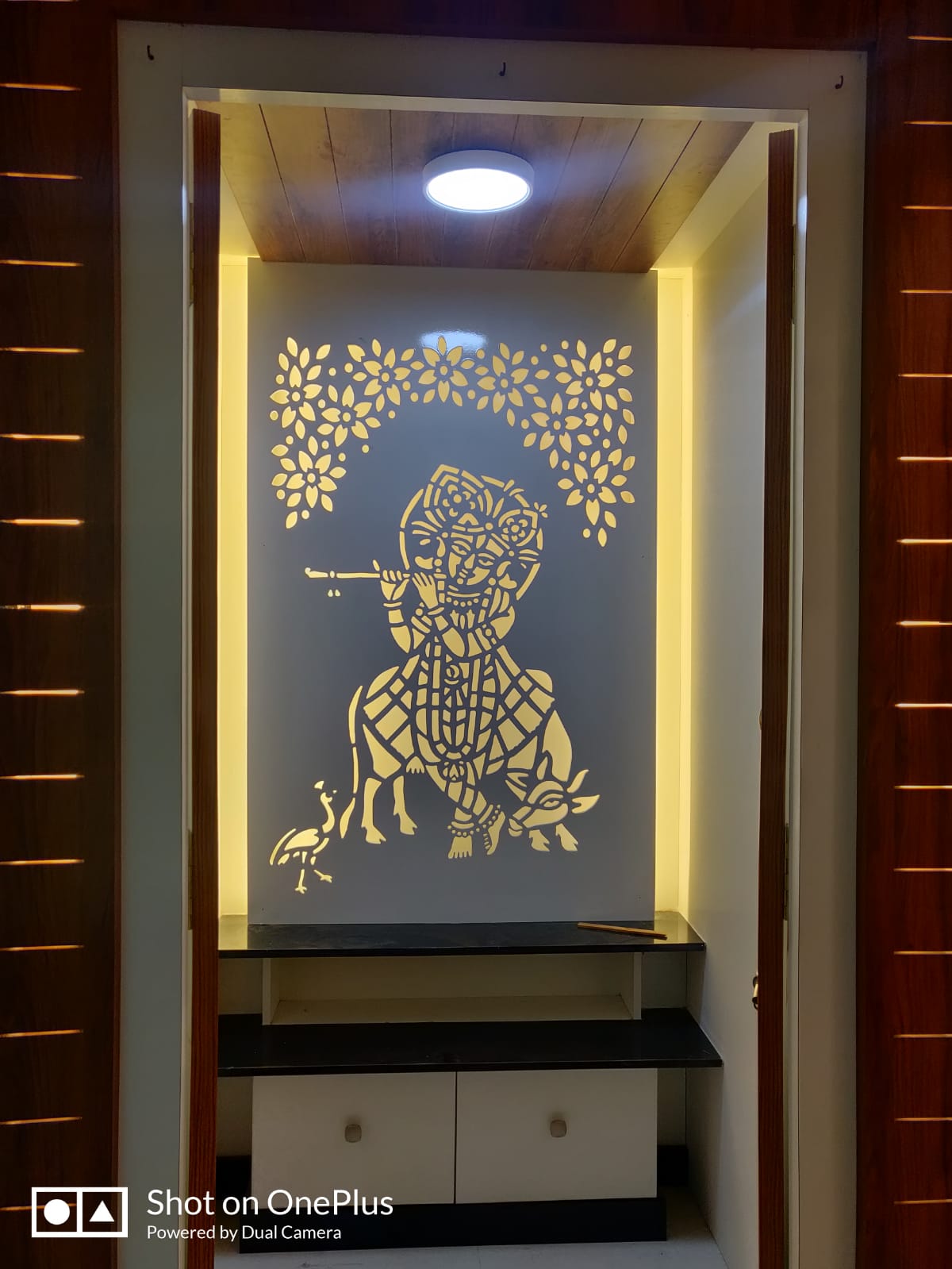A pooja room serves as your home's spiritual heart—a peaceful sanctuary for prayer, meditation, and connection with the divine. Modern pooja room design beautifully blends traditional reverence with contemporary aesthetics, creating spaces that honor spiritual practices while complementing your home's overall design.
Location and Vastu Considerations
Traditionally, the northeast corner is considered most auspicious for pooja rooms, as it receives morning sunlight and positive energy. East and north-facing directions also work well. Avoid placing the pooja room near bathrooms, underneath staircases, or in bedrooms if possible. Even in modern homes with space constraints, thoughtful planning can accommodate Vastu principles while maintaining design integrity.
Space Planning for Different Home Sizes
Pooja rooms adapt to various space constraints. Large homes can dedicate an entire room with space for sitting during prayers. Medium homes might allocate a corner or alcove. Compact apartments can incorporate wall-mounted units or beautiful cabinets that close when not in use. Even a well-designed shelf or niche can create a meaningful sacred space. The key is thoughtful design that facilitates peaceful devotion regardless of size.
Design Styles: Traditional to Contemporary
Traditional designs feature ornate woodwork, brass or copper elements, carved temple-style structures, and rich colors like maroon and gold. Contemporary designs embrace minimalist clean lines, neutral color palettes, concealed storage solutions, and modern materials. Transitional designs blend both worlds, incorporating traditional symbols with modern execution. Choose a style that resonates with your spiritual practice and home's aesthetic.
Material Selection
Materials significantly impact both appearance and maintenance. Wood (teak, rosewood, or mango) provides warmth and traditional appeal. Marble creates elegant, easy-to-clean surfaces. Granite offers durability and variety. Corian combines modern aesthetics with practicality. Metal accents in brass, copper, or steel add decorative elements. Consider moisture resistance, maintenance ease, and how materials age—these spaces should maintain their sanctity for years.
Lighting Design for Sacred Spaces
Lighting transforms a pooja room from simple to sublime. Natural light through windows creates the most peaceful ambiance. Warm white LED lights provide gentle illumination. Recessed spotlights highlight deity idols. Decorative diyas or candle holders add traditional charm. Pendant lights can serve as focal points. Consider dimmable options to adjust mood for different times of day and types of prayer. Adequate lighting is essential for reading scriptures and performing rituals.
Storage and Organization
Organized storage maintains the sanctity and cleanliness of your pooja space. Include closed cabinets for pooja items and supplies, drawers for incense, camphor, and small accessories, shelves for religious books and texts, designated spots for oil lamps and bells, and storage for fresh flowers and garlands. Hidden storage keeps the space clutter-free while ensuring everything needed for worship is readily accessible.
Deity Placement and Decoration
Idol placement follows specific principles. Place idols at eye level when seated or slightly higher. Avoid placing deities directly on the floor. Ensure adequate space between different deities. Use beautifully crafted shelves or platforms. Decorate with fresh flowers, traditional rangoli patterns, auspicious symbols, and seasonal decorations. Personal touches make the space more meaningful while maintaining reverence.
Ventilation and Air Quality
Proper ventilation is essential for pooja rooms. Good airflow disperses incense smoke, prevents mustiness, maintains freshness, and creates pleasant atmosphere. Include windows if possible, exhaust fans for enclosed spaces, air purifying plants like tulsi, and proper ceiling height for comfort. Fresh air contributes to the peaceful, clean feeling appropriate for spiritual practice.
Color Psychology
Colors influence mood and spiritual connection. White symbolizes purity and peace. Yellow brings optimism and spiritual energy. Light blue creates calm and serenity. Cream offers warmth and neutrality. Gold accents add sanctity and reverence. Avoid dark or aggressive colors. The color scheme should promote calmness and focus, enhancing the meditative quality of the space.
Modern Innovations
Contemporary pooja rooms can incorporate modern conveniences while maintaining tradition. Wall-mounted units save floor space in compact homes. Foldable or retractable designs offer flexibility. Built-in audio systems play devotional music. LED backlit panels create stunning visual effects. Smart lighting with preset modes adapts to different rituals. These innovations make daily worship more convenient without compromising spiritual significance.
Maintenance and Cleanliness
Maintaining pooja room sanctity requires regular care. Choose easy-to-clean materials. Establish daily cleaning routines. Use appropriate cleaning products that don't damage materials. Store items properly after use. Regular maintenance preserves both physical beauty and spiritual purity. A clean, well-maintained pooja room enhances devotional experience and shows proper respect for the sacred space.
Create Your Sacred Sanctuary
Vyom Build designs pooja rooms that honor tradition while embracing modern aesthetics and functionality. Let us help you create a spiritual space that brings peace and positivity to your home.
Design Your Pooja Room

